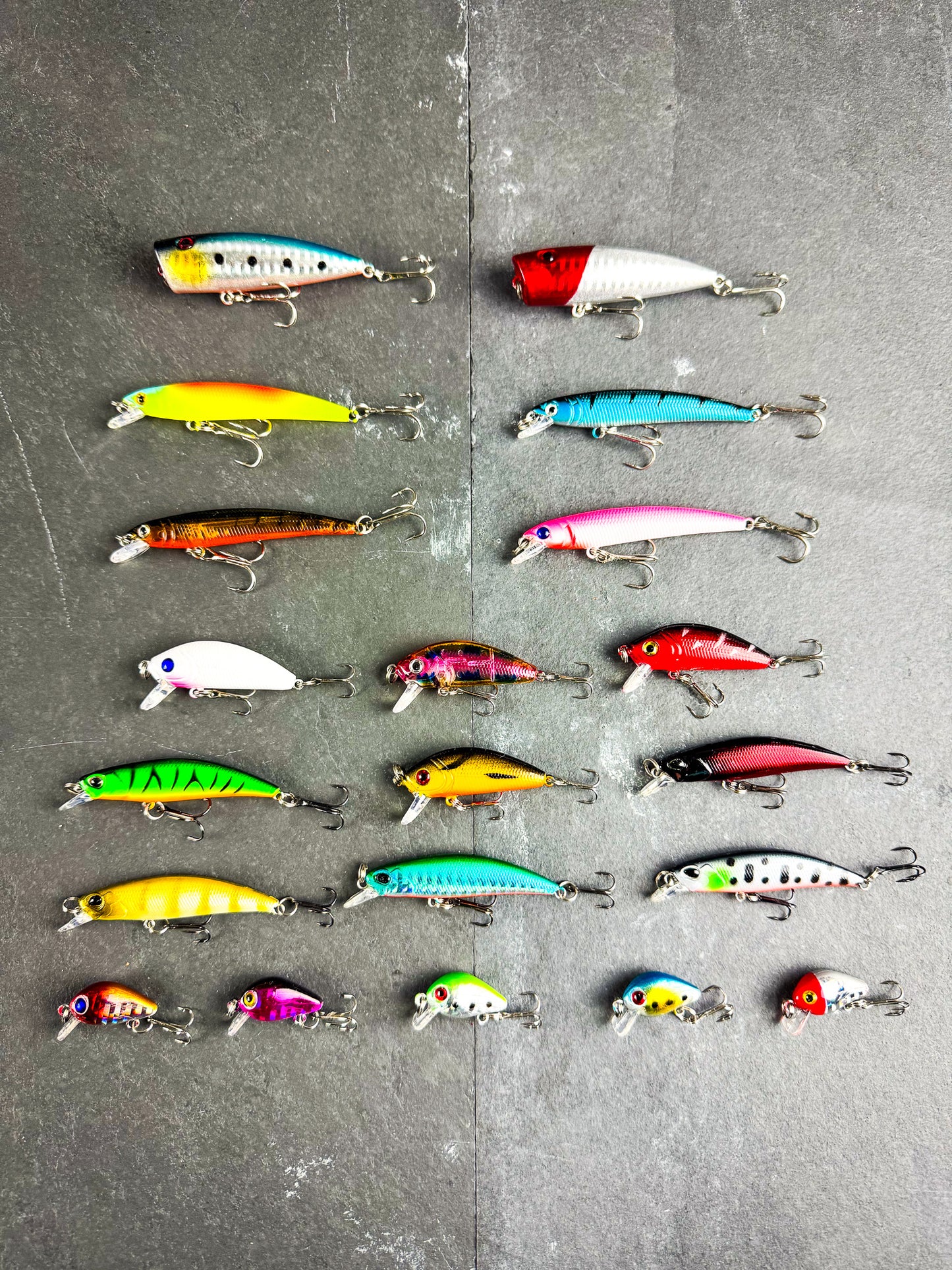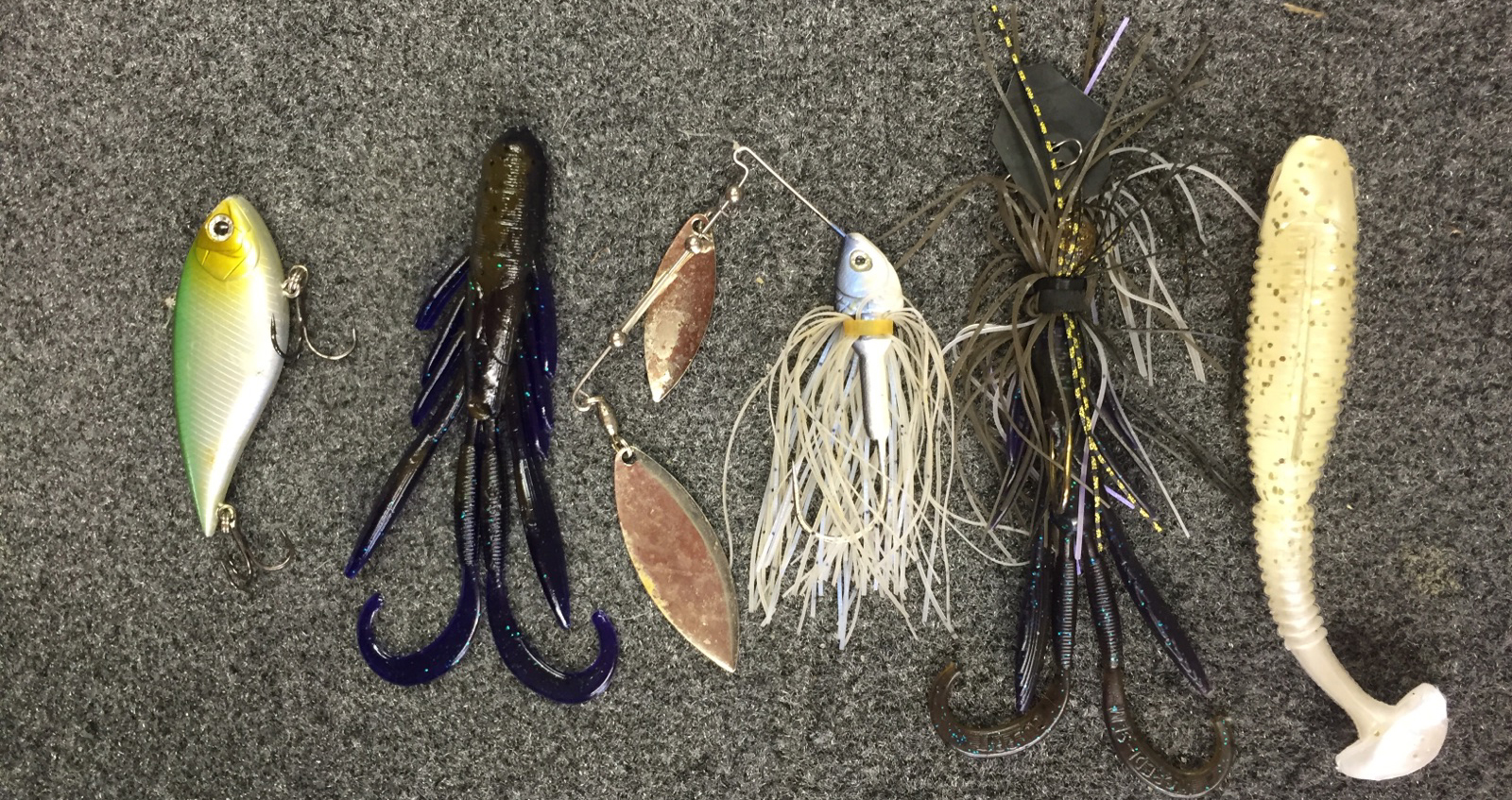The Role of Water Temperature in Choosing Bass Fishing Lures
Explore the Tricks Behind Reliable Bass Lures to Enhance Your Fishing Experience
Recognizing the complexities of bass Lures can substantially affect fishing success. Various Lures offer unique objectives, from crankbaits developed for broad insurance coverage to jigs that target particular frameworks. The efficiency of these Lures commonly rests on variables such as shade, movement, and seasonal patterns. By mastering these elements, fishermens can unlock an extra rewarding experience. The inquiry remains: which methods will generate the best results on the water?
Recognizing Bass Behavior and Environment
Comprehending the actions and habitat of bass is crucial for anglers seeking success on the water. Bass are versatile fish discovered in various freshwater settings, including rivers, ponds, and lakes. They often tend to favor areas with structure, such as immersed rocks, fallen trees, and marine greenery, which give shelter and hunting premises.
Seasonal patterns considerably influence their habits; in warmer months, bass usually populate superficial waters, while they pull away to deeper locations during chillier seasons. Bass Fishing Lures. Their feeding practices are opportunistic, with a diet being composed mostly of smaller sized fish, bugs, and crustaceans
Time of day also plays a duty; bass are more active during late nights and early mornings. Weather problems can impact their actions as well, as overcast days might encourage superficial feeding, whereas bright sunlight typically drives them to seek cover. Acknowledging these patterns outfits fishermens with the knowledge needed for effective angling methods.
Types of Bass Lures and Their Makes use of
A selection of bass Lures are crucial tools for fishermens aiming to attract this preferred game fish. These Lures can be classified right into a number of kinds, each offering unique objectives. Crankbaits, created to mimic the swimming activity of baitfish, are effective for covering huge areas swiftly. Spinnerbaits, including rotating blades, produce resonances and flashes that can attract bass hiding in cover. Jigs, with their heavy heads and weedless style, are optimal for bottom fishing, enabling fishermens to existing bait near structures where bass typically prowl. Soft plastics, such as worms and creature lures, supply versatility and can be rigged in numerous methods to adjust to varying conditions. Topwater appeals, like poppers and frogs, are best utilized throughout low-light hours when bass are proactively feeding on the surface. Each kind of lure plays an essential function in boosting fishing experiences and raising the probability of successful catches.

Color and Layout: What Draws In Bass?
What variables affect bass attraction to specific appeal shades and layouts? The interaction of light, water quality, and the natural surroundings plays a crucial role. Intense colors, such as chartreuse and orange, can capture a bass's eye in murky waters, while a lot more suppressed tones like eco-friendlies and blues may succeed in clear problems.
Design components, consisting of shape and movement, likewise dramatically effect bass destination. Lures that mimic natural prey, such as baitfish or crawfish, are specifically efficient. Furthermore, the presence of reasonable information, like ranges or fins, improves the lifelike look, further tempting bass.
Mental elements, such as a bass's feeding habits and territorial impulses, have to not be neglected. In specific scenarios, vibrant styles can provoke a response from aggressive bass, while subtle variations can interest a lot more cautious fish. Ultimately, recognizing design and color nuances is vital for enhancing appeal effectiveness.
Matching Lures to Water Conditions
Selecting the ideal appeal entails more than simply color and style; water problems play a substantial duty in figuring out one of the most reliable alternatives. Factors such as water quality, temperature, and depth directly influence bass habits and their feeding patterns. In clear water, subtle presentations and all-natural colors often tend to be more efficient, while dirty conditions may require brighter, a lot more vivid Lures that can stand out.
Temperature also impacts bass activity; throughout warmer months, faster-moving Lures can evoke strikes, whereas cooler temperature levels might require slower, extra purposeful presentations. Furthermore, much deeper waters usually demand heavier Lures that can get to the desired depth, while superficial locations are much better suited for lighter, surface-oriented options.
Methods for Effective Lure Discussion
Understanding the methods for reliable lure discussion can considerably boost angling success. Fishermens need to concentrate on the rate and rhythm of their retrieves, adapting them to simulate the all-natural motion of victim. A consistent retrieve jobs well for several attractions, but including stops briefly can activate strikes from more cautious fish. In addition, varying the deepness of the attraction is essential; using various casting angles and readjusting the reel can assist target fish at various midsts.
Utilizing a mix of skill presentations, such as twitching or dragging the appeal across the bottom, can additionally be efficient. It is important for fishermens to review the water and change their methods based upon visibility and structure. In addition, offering Lures near cover, like immersed rocks or plants, usually yields much better outcomes, as bass often tend to seek shelter. Inevitably, trying out various strategies will certainly bring about a much more rewarding angling experience.
Seasonal Considerations for Draw Option
Seasonal changes substantially affect bass actions and lure effectiveness. As water temperature levels fluctuate, anglers should change their attraction choices to line up with pre-spawning and post-spawn problems. Recognizing these seasonal patterns can boost angling success by targeting bass at their most energetic times.
Seasonal Water Temperature Effects
As water temperatures vary throughout the year, bass actions and feeding patterns transform, influencing the performance of different lures. During cooler months, bass tend to become lethargic, favoring slow-moving Lures that imitate battling target. In contrast, as temperatures rise in springtime, bass end up being extra active, making faster, extra click for source hostile Lures efficient. Mid-summer sees bass looking for much deeper, cooler waters, requiring using Lures that can reach these midsts. As temperature levels start to drop in fall, bass commonly feed heavily in preparation for winter months, making functional Lures that can copy a selection of forage types especially effective. Understanding these seasonal temperature level results enables anglers to pick proper Lures that align with bass behavior, optimizing their fishing success.
Pre-Spawning Lure Choices
What variables affect the option of Lures during the pre-spawning duration for bass? Anglers need to think about water temperature, weather, and the bass's feeding habits. As temperature levels climb and days extend, bass become extra aggressive and energetic, triggering a shift in their feeding patterns. During this time around, tempts that imitate the natural prey of bass-- such as shad or bluegill-- are specifically efficient. Popular choices consist of spinnerbaits, lipless crankbaits, and jigs, which can be fished at various depths. Furthermore, fishermens should focus on locations with cover, such as immersed plants or rocky structures, as these places commonly attract pre-spawn bass. Best Bass Lures. Comprehending these elements can dramatically enhance the possibilities of an effective fishing trip throughout this vital seasonal phase
Post-Spawn Techniques Adjustments
Post-spawn bass exhibit different actions than during the pre-spawn stage, reliable lure choice continues to be important for fishermens intending to target them effectively. After spawning, bass typically come to be sluggish and look for much deeper waters, making it vital to readjust lure options appropriately. Anglers ought to take into consideration utilizing slower-moving baits, such as jigs or soft plastics, which can attract bass that are much less hostile. Crankbaits with a subtle action can additionally be reliable, permitting a slower presentation that resembles the natural post-spawn forage. In addition, angling near structure, such as submerged plants or rocks, can raise possibilities of success. By recognizing these seasonal modifications, fishermens can boost their angling experience and boost their catch rates throughout the post-spawn duration.
Regularly Asked Concerns
Exactly how Do I Pick the Right Rod for Bass Fishing?
To pick the ideal pole for bass fishing, one need to think about the rod's size, power, and activity. A tool to medium-heavy rod, around 6 to 7 feet, is typically perfect for convenience and control.

What Is the most effective Time of Day to Catch Bass?
The very best time of day to catch bass is normally morning and late mid-day. During these periods, bass are a lot more energetic, feeding near the surface area, making them much easier targets for fishermens making use of effective lures.
Exactly How Do Climate Problems Impact Bass Fishing Success?
Weather substantially influence bass angling success. Warmer click site temperatures and cloudy skies commonly motivate bass task, while cool fronts can trigger lethargy. Rainfall can likewise boost feeding habits, making it crucial for fishermens to adapt their approaches appropriately.
Can I Use Lures for Other Fish Variety?
Yes, draws developed for bass can additionally be efficient for other fish varieties. Nevertheless, selecting the suitable size, color, and activity according to the target types and their feeding practices stays essential for success.
What Prevail Errors When Utilizing Bass Lures?
Common blunders when using bass Lures consist of selecting inappropriate sizes or colors, retrieving as well promptly, stopping working to adjust to weather, and not considering water depth. These mistakes can dramatically reduce the chances of an effective catch.
As water temperature levels rise and fall throughout the year, bass behavior and feeding patterns alter, affecting the effectiveness of various attractions. Mid-summer sees bass looking for much deeper, cooler waters, requiring the use of Lures that can get to these midsts. Post-spawn bass display various habits than during the pre-spawn stage, efficient lure option continues to be essential for anglers intending to target them efficiently. After spawning, bass often come to be tired and seek deeper waters, making it visite site essential to change appeal choices accordingly. Usual errors when utilizing bass Lures include picking inappropriate sizes or shades, retrieving also swiftly, falling short to adjust to weather conditions, and not taking into consideration water depth.